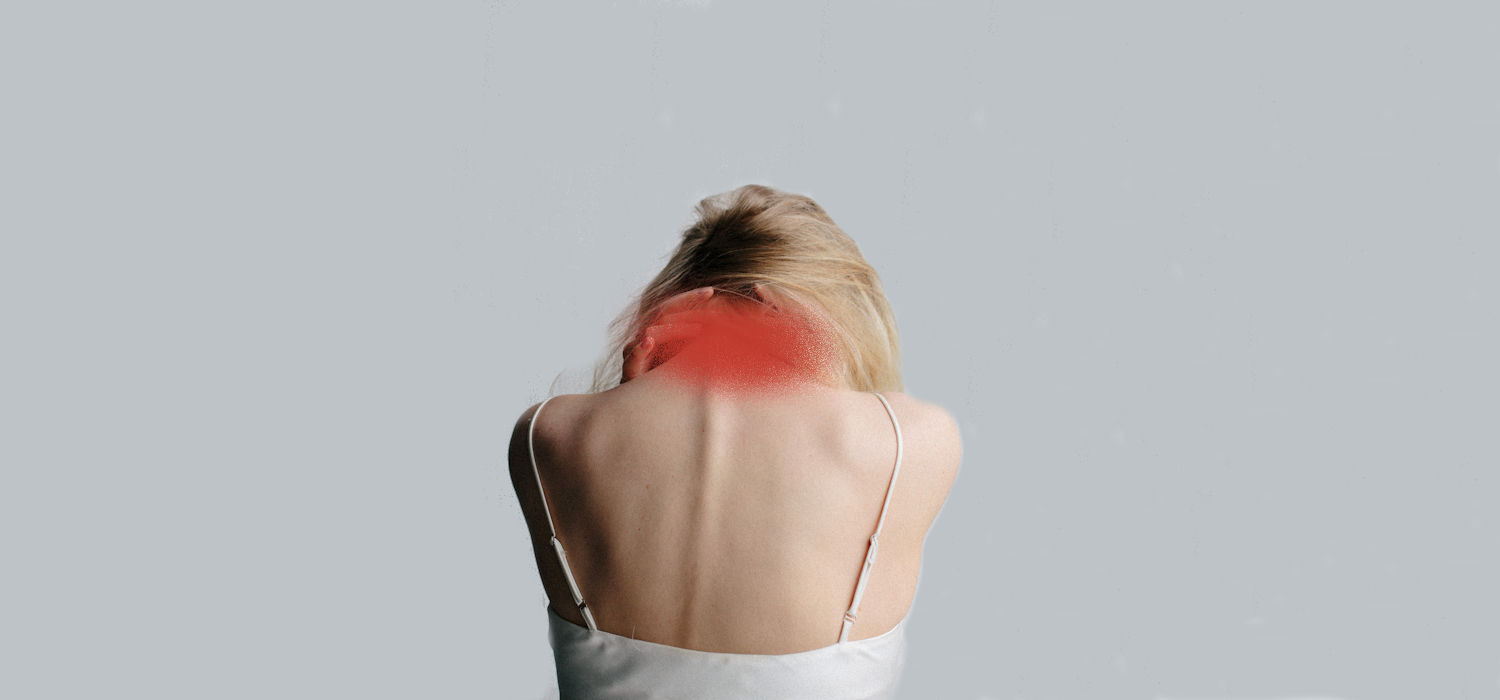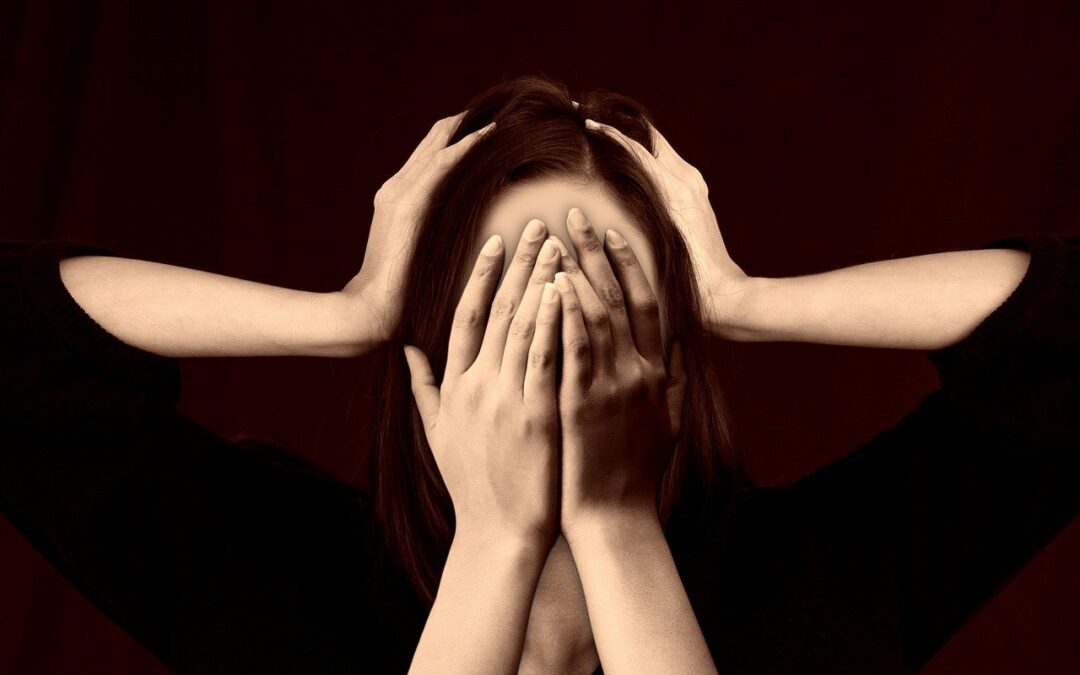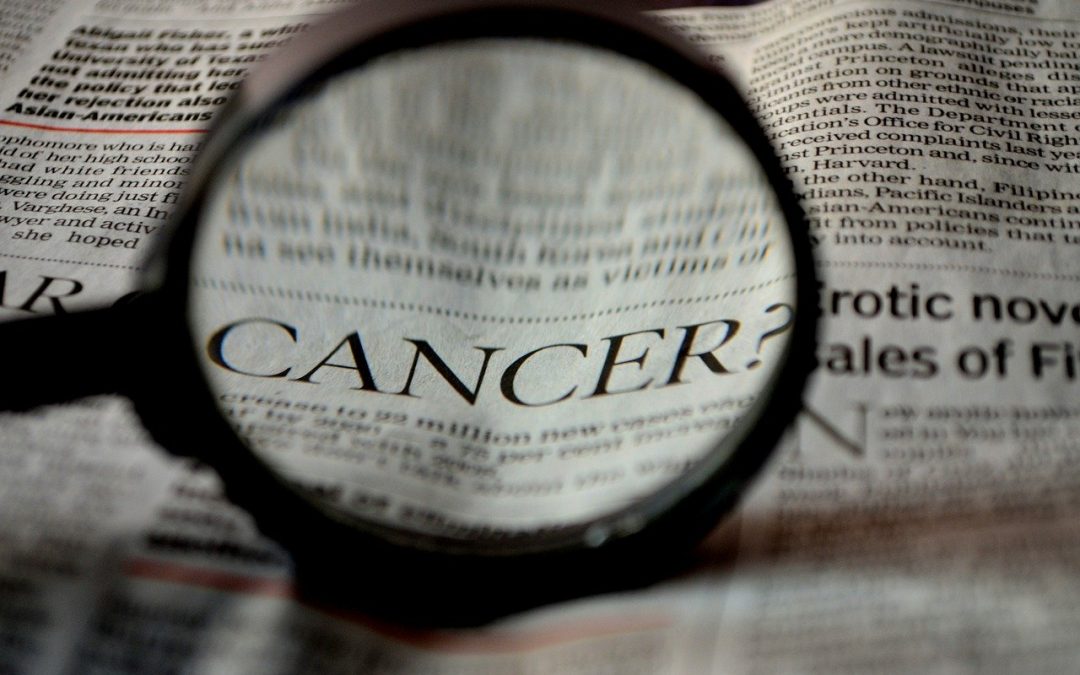In Shiatsu, many people complain about neck pain and stiffness and it is a treatment that is studied quite early in the Shiatsushi curriculum. However, the reality is far more complex than what is usually taught in school, because the neck is very complex and the causes of pain can be very diverse. Let’s take the time to know a little more about it to avoid accidents and know what to do.
When you study anatomy, you can’t help but marvel at the complexity of certain body areas. By observing an arm, it is not complicated to understand how it works but it is another matter with the nape of the neck (from the Arabic nukha’) which is a jewel of complexity. Indeed, there is a good reason for this: the neck holds the head (on average 5kg), it makes it move in a large number of possible directions (in tilt, rotation and lateralization) and it has no support from any other body parts (whereas the lumbar-dorsal spine is embedded in a rather large trunk). Therefore, it must be resistant to pressure, have a large number of muscles and be able to stand on its own without relying on the help of other body parts.
A bit of anatomy
If we look at the anatomy in some detail, the nape of the neck (not just the neck), we can see that everything is organized in such a way as to articulate the cervical vertebrae.
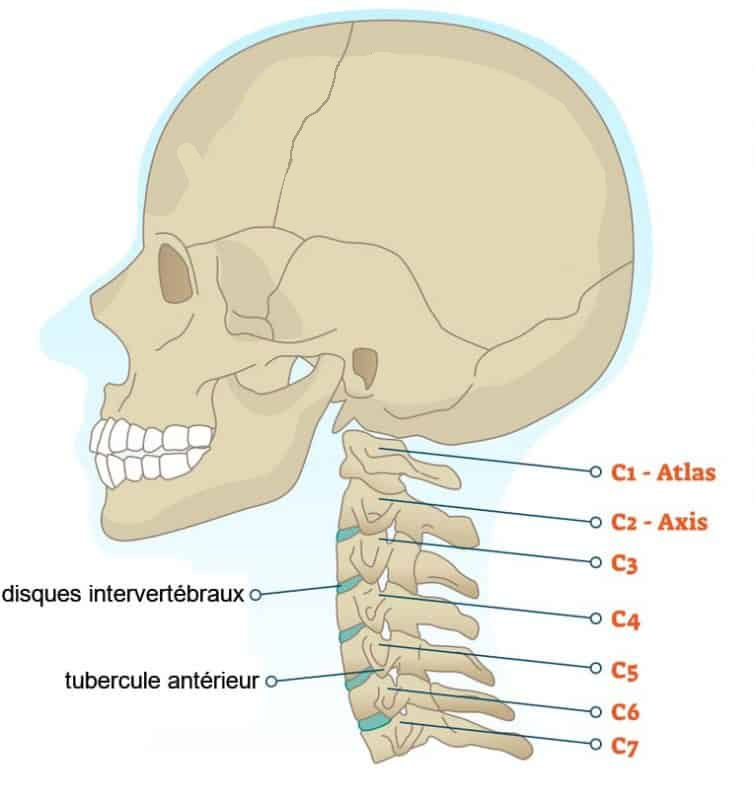
The cervical spine consists of 7 vertebrae, of which, the first and second have their own name: the atlas and the axis. Atlas is a reference to the Greek titan who carries the world as this vertebra carries the globe of the head. A very heavy task. These two have a particular structure, while the other 5 cervical vertebrae are more similar, more like the thoracic (or dorsal) and lumbar vertebrae. Here is the classic way to describe the local anatomy:
- The body of the spine represents the ventral part: it is thick, solid
- The vertebral arch represents the dorsal part: it surrounds the foramen
- The intervertebral foramen is in the middle: it is the hollow within the bones where the spinal cord passes. It is also called the hole of conjugation.
Obviously, between each of these bones are cartilages. Each vertebra is connected to the next one by a set of ligaments, a word that means “that connects”.
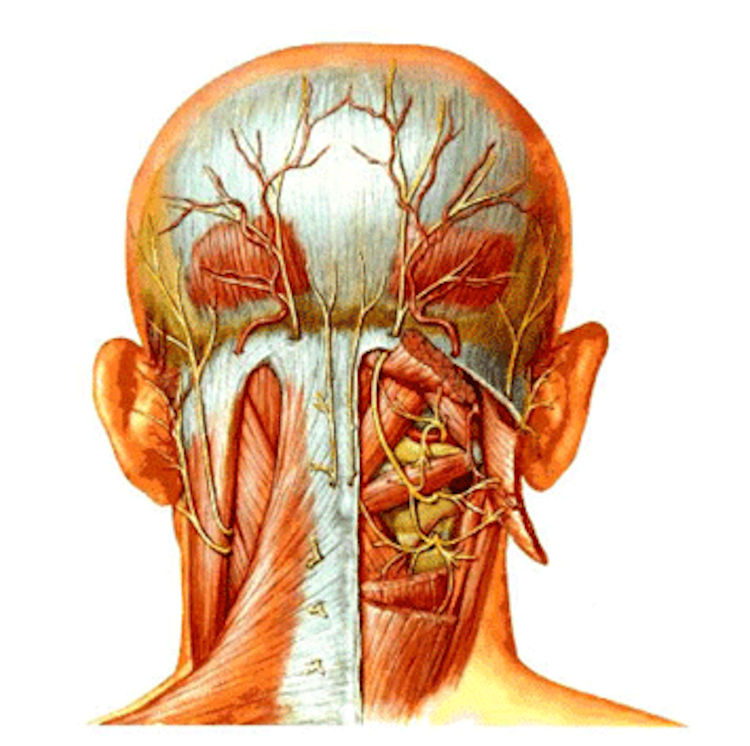
This is when the muscles come into play to mobilise and solidify the structure. And there are many of them. We speak of a deep muscular plane, then a 2nd plane, a 3rd plane and a superficial plane. The deeper you go, the closer the muscles are to the bones and the shorter they are. The further away you go, the longer the muscles are and the more they hang to the base of the skull and into the back, like the trapezius or the splenius.
The causes of pain
It is almost and endless task to fully list all the causes of neck pain and stiffness.
However, we can try to summarise them with a little common sense.
- Traumatic: this is the most obvious case. A car accident (whiplash injury), a blow to the neck, a fall on the head, and you get a physical shock strong enough to create a brutal elongation, a sprain, or even a bone displacement. You should wary of this kind of origin because it is not proper to handle a person in this state. If it is a recent injury, you must have the reflex to refer to a doctor for an X-ray. Imagine that there is a cervical fracture or a stretch, even Shiatsu pressure can have serious consequences. If the doctor’s box is ticked and the trauma is long-standing, known and followed, then it would be better for an osteopath to take in charge, in conjunction with a Shiatsushi, to work on the musculature release tension and make the energy circulate…etc. It is recommended to learn the tests that can detect a serious problem (see below).
- Pathological: there are diseases that affect either the marrow, the bones or the nervous system. In any case, you need a medical diagnosis to know what the problem is. For example, cervical osteoarthritis is a disease caused by the wear and tear of cartilage. The herniated disc is a cartilage out of its central axis. Chronic torticollis is due to tears or deformations of ligaments or muscles, not to mention meningitis. In short, it is not all the same and it requires a fair amount of caution with the mobilizations learned in Shiatsu schools.
- Inflammatory: rheumatoid arthritis, spondylarthritis, cervico-brachial neuralgia, inflammatory disorders can also cause neck pain. I am thinking in particular of Arnold’s nerve neuralgia which would deserve an article of its own, as it is sufficiently frequent to be studied in detail. In any case, in addition to medical follow-up, Shiatsu is of great help in creating space between the cervicals and in calming the pain. The best way to do this, is to use the meridians, the local and distal points, because the more energy flows freely as well as the fluids, the more the inflammation will subside.
- Nervous tension: For many people, stress accumulates in the shoulders and neck to the point where the head becomes partially or totally immobilised. In this case, I don’t need to draw you a picture: a thousand times yes to Shiatsu.
- Postural: a bad posture that is repeated every day is one of the best ways to get a sore neck. Endless hours at the desk in front of a screen, head pulled forward, or using a smartphone too much, breaks the neck almost at a right angle downwards, computing doesn’t really help.
- Physical activity: some sports, such as lifting weights, put a lot of strain on the neck. Pulling on a bar is also a strain. But also, physical work, such as in the building trade, where heavy materials are often lifted, will affect the neck. The muscles must be massaged and stretched.
- Rare case: wearing a helmet. I remember that, during manoeuvres in the army, we often complained of pain at the top of the head and the back of the neck. Wearing a helmet weighing several kilos all day created a little compression that became painful at the end of the day. Then I forgot about it. But years later, when I had become a Shiatsu practitioner, I received a professional soldier who complained about headaches. In fact, it was always after doing exercises with a helmet.
- Psycho-emotional: psychological trauma can also create unbearable tension in the neck. I remember a young woman who had cervical tetany attacks that made her scream. Throughout her childhood, her father would grab her by the neck and smash her face into her school books when she didn’t understand her lessons, while yelling at her. She had fled her father and her country, but the pain persisted. Again, Shiatsu was sovereign and allowed her to get rid of her stiffness and pain. The Sky Window points are very effective in this type of case.
- Climatic: on this point, oriental medicine refers to this as “external climatic factors”. The best known is the Wind which stiffens the neck, especially when combined with the Cold. Hence the interest in wearing a scarf or a hood during Autumn (one of the windy seasons) and during Winter (cold season). That said, Wind-Damp is not much better.
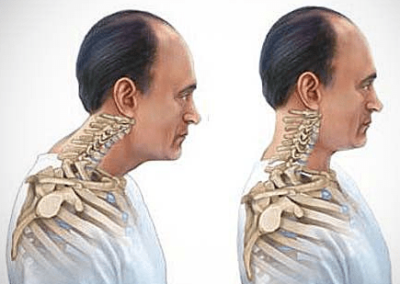
As I said, this list is not exhaustive, but it does give a relatively clear picture of the causes of neck stiffness and pain.
Etiology in Asian Extreme Medicine
Rather than talking about Traditional Chinese Medicine or Traditional Oriental Medicine (where does Orient begin?), it is more accurate to talk about EAM for Extreme Asian Medicine, because if China was the cradle of this medicine a long time ago, it has been a good millennium since Vietnam, Japan and Korea have absorbed and reworked this medicine. Moreover, the term “Oriental” is being used less and less to designate Asia, because it refers to the Orientalism of the 19th century and its colonialism.
If the approaches and techniques may vary slightly, but the substance and the theories remain the same. What does the MEA say about neck stiffness and pain?
- As said before, it is first of all climatic factors that attack the defensive Qi. The neck is often uncovered and offers a playground where the wind can easily penetrate. Who has never had a stiff neck after being outside on a windy, rainy and/or cold day? It’s a typical example. If you act very quickly, by massaging your neck and warming it up and your body in depth by having a hot drink, or by taking a hot bath, it will easily pass. Otherwise, if you leave it as it is, thinking that it should be better by tomorrow, well… in fact it won’t be better the next day, quite the contrary. It is the best way to get at least a stiff neck and at worst fever and chills.
- Conversely, too much heat damages body fluids. The muscles dry out as do tendons and ligaments. In conclusion, the neck stiffens but this symptom will be fairly general throughout the body. As a result, the Wind-Heat is not good either.
- Empty Qi and stagnation of blood will cause the muscles in the neck to become blocked. This is typical, because as soon as the Qi stops, the blood stagnates. Once the Blood stagnates, then the muscular pains appear.
- Kidney Yang emptiness. This one is less obvious, at least we don’t necessarily think about it. All the Yang meridians are present over the head and the largest of them is Tai Yang. Tai Yang is the SI-Bladder couple, but the Bladder is also linked to the Kidneys (Biaoli relationship). So, if the Yang of the Kidney does not rise to the top, there will not be sufficient motion and strength for the Bladder that passes through the neck to do its work. It will be felt by a pain of varying dullness which can go as far as stiffness.
- Rare case: toxic Wind by injury/cut. Philippe Sionneau [i] points out this situation which is never thought of. And with good reason. It refers to the Chinese definition of tetanus. Therefore, it is a medical emergency that does not fall within the scope of Shiatsu. We are generally vaccinated against this disease in childhood. However, if you do Shiatsu in Africa or South Asia, it is quite possible that you come upon this case. To differentiate it, here is the list of symptoms: stiffness and hypertonicity of the neck after a cut. Tightness in the jaws. Fever and chills (this should alert you). Headaches, dysphoria, restlessness. But most importantly, twisted smile-like facial rictus and convulsion of the limbs. The pulse is thready and tight. Only one thing to do: go to hospital.
Tests you should know to avoid accidents
Due to the complexity of the neck, it is important to ensure that you do not harm anyone who comes to see you. In order to do this, it is essential to know the discriminating tests that enable you to ascertain whether there is a risk in manipulating and treating the neck. The four tests in total are very simple. Unless you have learned them with a teacher, we do not recommend that you do them without previous training.
- Test a cervical fracture. The patient is seated, head and back straight, and both hands are used to press on the top of the skull. If the pressure is painful, the patient is sent for an x-ray examination.
- Test for whiplash. From the same position, place your hands on the base of your head from behind and stretch it upwards. If there is any pain, it is a whiplash injury. You should not continue to stretch and you should immobilise the neck.
- Test for nervous compression or damage to the cervical-brachial plexus (Adson’s test). The person is seated. The person is instructed to extend one arm horizontally to the side and then approach the ear towards the opposite shoulder to the outstretched arm. Then ask to rotate the outstretched arm so that you can look at the hand palm. Then raise the outstretched hand. If there is any pain in the palm of the hand, then there is a cervical-brachial plexus spasm. Do so on both sides. The occurrence of pain is a counter-indication for cervical mobilisation.
- Test of the cervical arteries (Addison Wright Test). The person is seated. Have him/her to turn his/her head as far to one side as possible, then have him/her look up and behind. Wait for a few seconds. If there are black dots in the vision, or if the vision gets blurry, or if there is a dizziness, it means that there is a cervical artery problem. Refer the person to a physician who will prescribe a Doppler and do not manipulate the neck.
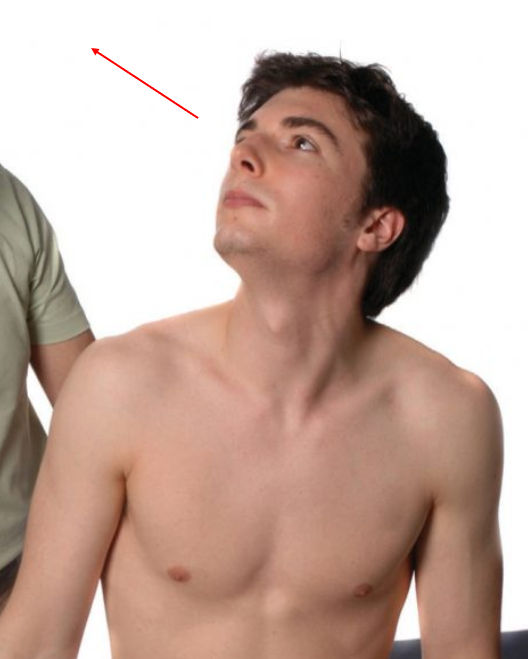
Neck treatment in Shiatsu
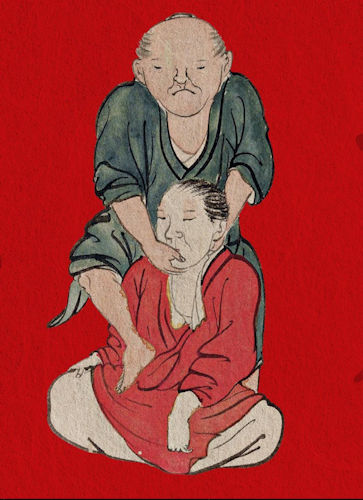
Depending on the Shiatsu school, treatments are different. Zen Shiatsu will emphasise the pressure on meridian points, while Namikoshi Shiatsu will focus on muscle points. In all cases we find some massage techniques and gentle mobilisations in any direction with a continuous stretching. The school of Ohashi is the only one that proposes to add a leverage by using the tenugui to achieve a stronger effect. The Gabriella Poli’s Shiatsu and Fascia school insists on the mobilisation of the fascia, which is a bit more subtle.
All are good approaches, but they must be used wisely and consciously. Hence the interest of the above lists, for they allow us to carry out a useful assessment from which to directly exclude all cases that are medical or osteopathic/chiropractic. In the remaining cases, we will consider whether we can treat alone or in conjunction with an osteopath, a physiotherapist or an acupuncturist. Last but not least, when Shiatsu can act, it is important to know how to differentiate the causes in order to treat the imbalances correctly. Because relying solely on Heaven and Earth energy might be a bit short lived. Being a professional Shiatsu practitioner[ii] is about understanding the causes, knowing how to sort out the cases and taking responsibility for your choices.
Have a good practice!
Notes :
[i] “Diseases & Symptoms in Chinese Medicine”, volume 4. Philippe Sionneau, Guy Trédaniel éditeur, 2005.
[ii] Personally, I can only advise you to flee from short training courses lasting less than 3 years or less than 500 hours, in particular those claiming to provide you with a certificate after a week-end. Instead, always opt for the most challenging, extensive and content packed courses. 😊
Author
Ivan BEL, with the kind participation of Caroline Bourguignon for the tests (Ecole Occitane de Shiatsu Traditionnel)
- Free online class: Treating the Neck with Ivan Bel - 21 March 2024
- Summer intensive course: back to the roots of Shiatsu – 7 to 13 July 2024, with Ivan Bel - 27 December 2023
- Interview with Wilfried Rappenecker: a european vision for Shiatsu - 15 November 2023
- Interview : Manabu Watanabe, founder of Shyuyou Shiatsu - 30 October 2023
- Interview Mihael Mamychshvili: from Georgia to Everything Shiatsu, a dedicated life - 22 April 2023
- Biography: Dr Haruchiki Hirata 平田内蔵吉 (1901-1945) - 21 April 2023
Translator
- Interview with Mitsutoshi Taniguchi - 17 November 2022
